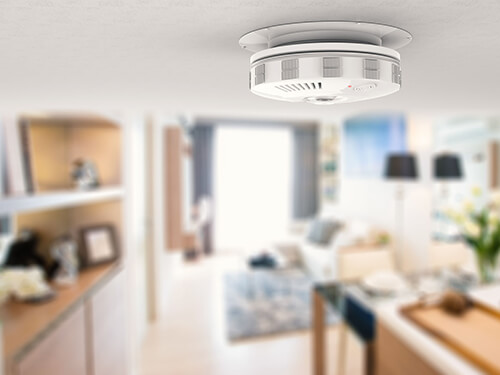
Tips for Prevention of Carbon Monoxide Leaks in Furnaces Furnaces are necessary for many households, but they can also be a significant source of high carbon monoxide. Carbon monoxide is an odorless and colorless gas produced by incomplete combustion. The presence of carbon monoxide has been linked to increased rates of heart disease, chronic obstructive pulmonary disease (COPD), and neurological damage. Causes of High Carbon Monoxide Levels Several causes lead to high levels of CO inside your furnace, including blocked air vents, blocked chimney flues, gas appliances installed incorrectly or not serviced regularly. A blockage in the air vents can cause your furnace to work harder than it should, which can lead to high levels of carbon monoxide. Your chimney flue is a significant part of the furnace, and it helps to remove the exhaust from your home. If this is blocked, it can cause the fumes from the furnace to enter your home. Insufficient ventilation can also lead to high levels of carbon monoxide inside your furnace. Make sure that you have sufficient fresh air coming into your home to help prevent this from happening. If you have a gas appliance in your home, it is essential to have...
View Article
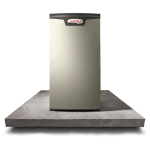
Factors to Consider When Purchasing a Furnace If you are purchasing a new home or have lived in your home for some time, you will eventually need to address your home’s heating and cooling needs. Purchasing a furnace is a sizable investment. You want to get the biggest bang for your buck. This means that you need a furnace that is efficient and reliable. The challenge is that since you will only buy a furnace once or twice during your homeownership, you may not know where to begin. There are several factors to consider when purchasing a furnace. This complete guide is designed to lay out everything you should consider when purchasing a furnace for your home and your family’s needs. Types of Furnaces Furnace technology has advanced drastically in recent years. Purchasing a new furnace means that you will be purchasing a unit that will be energy efficient, provide even heating, and offer the most value for your investment. The three basic furnace types are single-stage, two-stage, and modulating heating systems. It is good for you to become familiar with these three basic types of furnaces before making a purchase. Most people are familiar with a single-stage furnace. This...
View Article

What is the Ideal Temperature for Your Furnace during the Winter? There are two integral factors when choosing the temperature for your home heating this winter. The first is to ensure that you and your family are comfortable throughout the season. The other is to avoid the high costs that are often associated with heating a home in an area like St. Louis that has extremely cold winters. With that in mind, let us explore some strategies that you can use to strike a balance between comfort and savings. Your Ideal Winter Temperature Is Not Fixed Having a fixed temperature setting that is used 24 hours a day is wasteful for the average home. In fact, the EPA advises that the average home can save up to 10% just by lowering their thermostat 10 degrees for an eight-hour period each day. There are even greater savings available when you consider that the usual household will have at least three phases within a 24-hour period in which a distinct temperature can be set: away from the home, at home and awake, and at home and in bed. Programmable and Smart Thermostats While it is possible to control the various temperature periods...
View Article
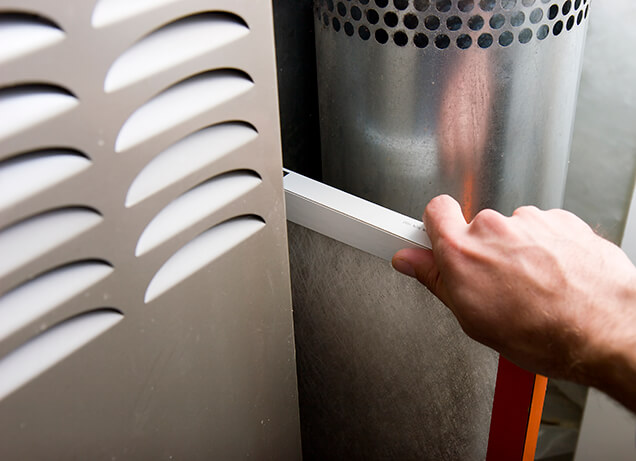
What Can You Do When Your Furnace Fails The winter months can bring harsh weather. You need to have a functioning heating system. Unfortunately, your heating system can fail when you need it to support you the most. Here are some steps you can follow if your home heating goes out and some reasons why your home heating system might fail. Shut Off the Gas Shut off the gas to your gas furnace immediately. Doing this prevents carbon monoxide leaks, which can be dangerous for your health. Almost 50% of homes in the United States use natural gas for their heat. If your home heating system suddenly fails, pay attention to any strange odors. Natural gas does not produce natural odors. Natural gas distributors add mercaptan to natural gas to give it a sulfuric smell. If there is a gas leak in your home or your furnace is producing gas, but it is not being burned, you will smell rotten eggs. Natural gas is between 85% and 95% methane. This colorless, odorless gas is flammable. Inhaling methane can cause nausea, headaches, and suffocation. If your heating system fails, turn off the gas. If you smell sulfur, exit your home. Contact...
View Article

How Do I Conserve Heat in the Winter? If winter days and utility bills make you shiver, your house might be too cold—and you may be paying too much to heat it. Thankfully, a few simple changes will give you a cozy and warm home while saving energy and money. Here, we’ll look at a few ways to conserve heat during a tough St. Louis winter. Use a Programmable Thermostat Today’s families are busy, and there’s no need to keep the home toasty when no one’s there to enjoy it. A programmable thermostat allows you to set temperatures for different timeframes, so you can save energy without sacrificing comfort. While they’re not recommended for use with heat pumps, programmable thermostats are a significant heat- and money-saver with central HVAC units. To use a programmable thermostat efficiently, choose a high setting when you’re at home and a lower one when you’re away. Using this type of thermostat can bring energy savings of up to 20% in some cases—which will help you save heat and money. Most thermostats can be installed with DIY methods and a few simple tools, but if you’re uncertain about the process, we’re here to help. Close the...
View Article
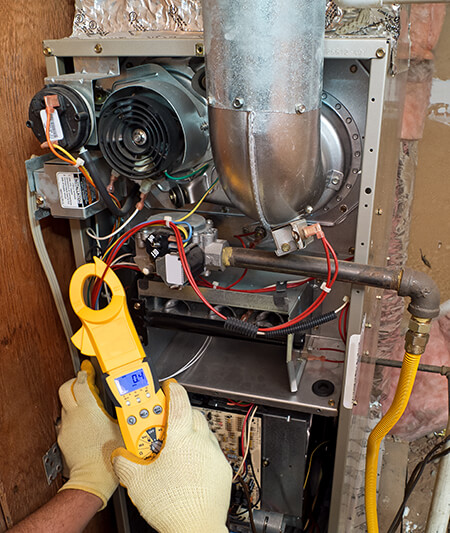
Common Reasons Why Your Heater May Not Shut Off Your HVAC air filter is a small and relatively low-cost component that’s incredibly significant when it comes to overall furnace operation. If it isn’t changed out regularly, major problems can ensue. When the air filter is allowed to become excessively dirty, normal airflow decreases. The furnace has a much harder time drawing air in and distributing it. More importantly, it cannot efficiently cool down the interior of the building. This leads to longer operating times, lower indoor air quality, and accelerated system wear. If your heater is constantly running but your home never actually gets warm, one of the first things you should check is your HVAC air filter. 2. The Thermostat Is Set Incorrectly Another simple and easy-to-resolve problem that might cause your furnace to run nonstop is an incorrect thermostat setting. When there are multiple residents in the household, there’s always the likelihood that someone else has cranked the thermostat to its highest possible setting. Check the temperature reading and the thermostat setting to see if this is the case. It’s also important to verify that your thermostat is in the right operating mode. Modern thermostats for central HVAC...
View Article
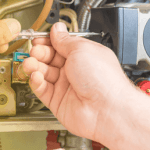
Cut Back On Your Heating Bills After a long summer season, you may be looking forward to the upcoming shorter winter days. However, one thing that you’re likely not looking forward to is the higher energy bills to heat your home. If you need assistance with reducing your wintertime heating bills, we’ve got some great solutions you can start implementing today. Opt for a Programmable Thermostat A programmable thermostat can be a big key to slashing your heating bills this winter season. This type of thermostat allows you to program different temperature settings for different times and days of the week. This means that you can set your thermostat 10 degrees lower during hours when you know that your family will be away from home. With a more optimized schedule for your thermostat, you can spend less money on energy bills. Reverse Your Ceiling Fans When you transition from the summertime heat to the wintertime cold, you need to change the direction of your ceiling fan. Most of these fans have a button on the base that will allow you to set your ceiling fan to force air in an upward direction. This naturally takes the heat that rises to...
View Article
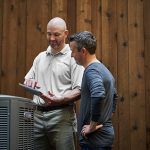
Selecting the Right AC Unit for Your Home Air conditioners are among the most common appliances in American homes. According to statistics, almost 75% of households have one type of AC unit installed. Cooling systems are an essential part of any household and take up a big chunk out of your home’s must-have appliances budget. Making an informed choice is vital since your residence’s cooling, energy consumption, and comfort are mainly dependent on it. When shopping for an air conditioner, you will find five main types of AC units available on the market. These systems are a central AC, window unit, ductless AC, hybrid, and portable unit. Each of these types is made for certain spaces and fulfills a specific purpose. In this post, we’ll discuss the various types of AC systems in-depth to help you make an informed choice when purchasing your next air conditioner. Central Air Conditioners Central air conditioners, also referred to as ducted systems, utilize split systems that regulate air through your home’s ductwork. The split attribute implies that the system is made up of two major units. The outdoor part comprises the compressor and condenser, while the indoor part consists of the air handler and...
View Article
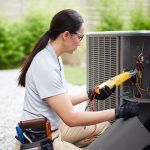
Air Conditioning Problems and Causes It’s hot outside, and the last thing you want is for your air conditioner to stop working. However, to have your house go from comfortable to unbearable because of an AC problem is a significant concern. Problems with your cooling system may be a minor inconvenience or a huge hassle. Here are seven of the most common AC problems that happen during the summer months. 1. The Filter Needs Cleaning The air filter is a frequently overlooked component of your cooling system. Dirty filters won’t allow the unit to work efficiently. Dust, dirt, and smoke can cause the filters in your air conditioner to become gummed up and restrict airflow. A dirty filter can also lead to dirty motors, coils, and clogged drain lines. That’s why it’s essential to regularly clean or change your AC unit’s air filter throughout the summer to prevent other problems. 2. The Drain Line Is Clogged Another common issue with cooling systems is a clogged drain line. The drain line allows the moisture that your AC unit pulls out of the air to leave the system. If you’ve been neglecting the air filter, a lot of dirt will end up...
View Article
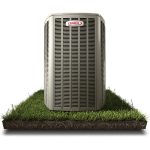
Understanding How Central Air Conditioning Works Generally, a central air conditioning system is the most energy-effective option for relieving your home of high temperatures. Typically, central air conditioning units contain two parts that usually function concurrently. One of these parts is usually installed outside your house while the other one works from indoors. The indoor part is also known as the system’s cold part, which is meant for cooling your home. Typically, it involves blowing the warm air over the coils containing the refrigerant. Refrigerant is a liquid that changes from liquid to gas as it absorbs heat from the warm interior air. The exterior part of your AC unit, on the other hand, is designed to compress the refrigerant and then convert it back to a liquid state, releasing the absorbed heat. In addition, the outdoor part contains a fan that pulls air from outside via the exterior coils. The outcome is a continuous process of humidity and heat getting removed from interior air, cold air getting into the home, and humidity and heat exiting your home. How AC Works Typically, central air conditioning is a system that allows you to condition your whole house from a central point...
View Article










